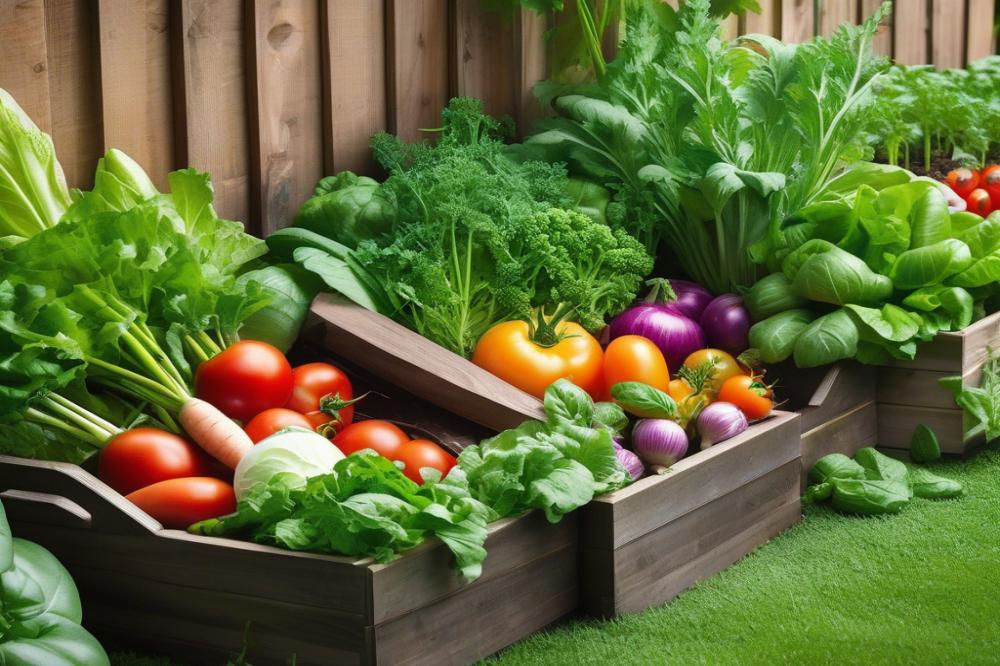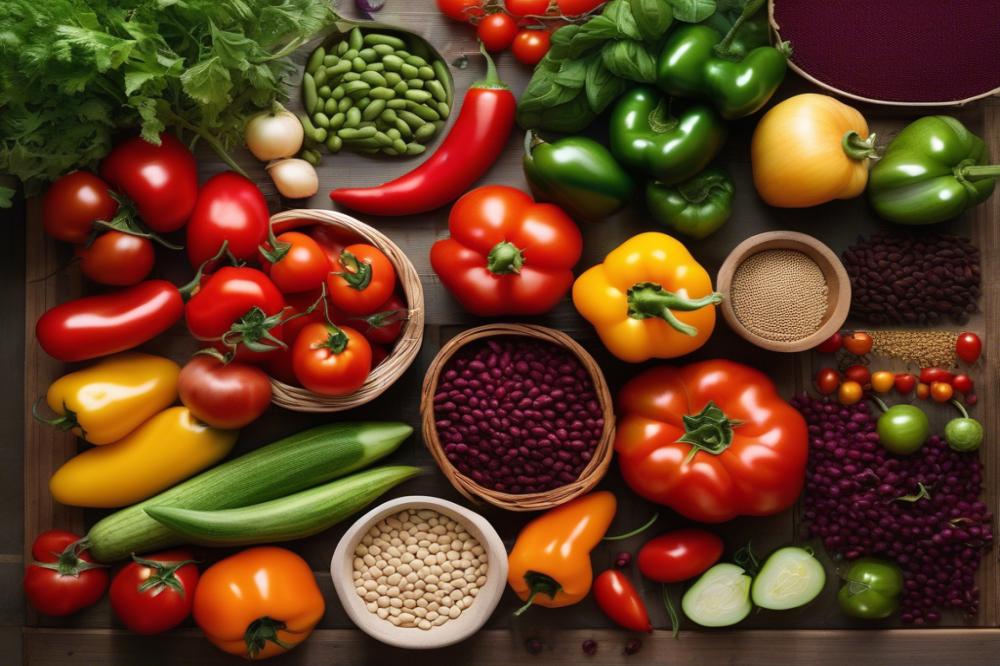Introduction
Choosing the right beans for your garden can significantly impact your harvest and gardening experience. Garden enthusiasts frequently face the decision between two appealing options: pole beans and bush beans. Each type has its own set of characteristics that can affect growth, care, and even flavor.
Pole beans are known for their vertical growth. They climb and require support, making them ideal for small spaces. In contrast, bush beans grow more compactly, spreading horizontally and often producing crops quicker. Understanding these differences is crucial for gardeners who want to maximize their yield and space in the garden.
This article aims to guide you through the distinctions between these common types of beans. By highlighting their strengths and weaknesses, you can make an informed choice for your garden. Whether you have ample room or limited space, both options offer delicious produce. Here, we will explore what sets them apart. For all you gardening beginners, we hope you find valuable insights that work with your specific needs and enhance your gardening journey. So, let’s dive into the details of #anchor_text_1# and discover which might be the perfect fit for your garden. If you wish to expand your choices further, #anchor_text_2# will be crucial.
Understanding Pole Beans


Pole beans are a type of climbing bean that require support as they grow. These plants can reach heights of 6 to 10 feet or more. Their long vines twist around trellises, fences, or any type of vertical structure. This growth habit allows them to occupy less ground space compared to bush beans. For gardeners with limited room, choosing pole varieties can be a clever option.
Growth Habits and Requirements
These beans thrive in warm weather. They prefer full sun and will grow best in well-drained soil that is rich in organic matter. Adequate spacing between plants is crucial; around 4 to 6 inches apart is ideal. Watering consistently will help maintain healthy growth, especially during dry spells. Providing a sturdy trellis early on can help these plants flourish.
Common Varieties of Pole Beans
Various types of pole beans exist, each offering different flavors and uses. Some popular choices include ‘Kentucky Blue’, known for its robust yield, and ‘Blue Lake’, which is favored for its tender pods. ‘Scarlet Runner’ stands out not only for its taste but also for its vibrant red flowers. Picking the right variety can enhance any garden and dinner table alike.
Advantages of Growing Pole Beans
One key benefit is their vertical growth, which saves valuable garden space. Additionally, pole beans typically produce a higher yield compared to bush types. Their continuous production throughout the growing season is another positive aspect. These plants also provide shade, which can help cool the surrounding soil and protect other crops from heat. Furthermore, they fix nitrogen in the soil, improving its fertility.
When to Plant and Care for Pole Beans
Timing is essential when planting pole beans. They should ideally be sown outdoors after the last frost date, ensuring warm soil temperatures. Growing them earlier than this can hinder germination. Once planted, regular monitoring for pests and diseases is vital. Staking or providing support as they grow helps direct their energy upwards, promoting healthier plants.
Understanding Bush Beans


Bush beans are compact plants that typically grow to around two feet tall. They differ from pole beans in that they do not require support to grow. Instead, bush beans grow in a more self-contained manner. This makes them ideal for gardeners with limited space or those looking to create a simpler growing environment.
Growth habits vary among different types of bush beans. They generally develop quickly and can produce a substantial harvest in a shorter growing season. Full sunlight is essential for optimal growth, and they thrive in well-drained soil. Watering them regularly is key, especially during dry spells. Using mulch can help retain moisture, keeping the plants healthy.
Several common varieties of bush beans exist. Some popular choices include Blue Lake, Provider, and Contender. Each variety has its own flavor and characteristics, appealing to different tastes and garden needs. Blue Lake is known for its tender pods, while Provider is lauded for its resistance to harsh conditions.
Growing bush beans offers several advantages. First, their smaller size allows for more efficient use of garden space. Harvesting is easier since the beans grow close to the ground. Also, bush beans typically require less maintenance than their pole counterparts. Their compact nature makes them suitable for container gardening as well.
The best time to plant bush beans is after the last frost in your area. Sow the seeds about one inch deep and several inches apart for optimal growth. Regularly monitoring for pests and diseases is crucial. After planting, consistent watering will promote healthy growth. Fertilizing is not always necessary, but a nutrient boost can enhance yields.
Key Differences Between Pole Beans and Bush Beans


Growth Height and Space Requirements
Pole beans can reach impressive heights, climbing up to six feet or more. This vertical growth allows them to utilize space effectively. They do require sturdy supports, such as trellises or stakes. In contrast, bush beans tend to stay compact. Many varieties only grow to about 2 feet tall. This makes them a great choice for small garden plots. They occupy less horizontal space, which can be beneficial for gardeners with limited room.
Yield and Harvest Times
When it comes to yield, pole beans often produce a larger crop over a longer period. They can continue to provide beans for several weeks once they start producing. Bush beans, however, mature more quickly, typically ready for harvest in about 50 to 60 days. This quick turnaround can be appealing for those wanting fresh produce earlier in the season. A single planting of bush beans can yield a large batch all at once, making them perfect for canning or freezing.
Soil and Sunlight Preferences
Both types of beans thrive best in well-drained soil with plenty of organic material. However, pole beans tend to benefit from slightly richer soil due to their extended growing period. Sunlight is crucial, as both varieties prefer full sun, ideally around six to eight hours per day. Some gardeners find that bush beans can tolerate partial shade better than their climbing counterparts.
Pest and Disease Resistance
Pest resistance can vary depending on the specific variety of beans. Pole beans are sometimes more susceptible to certain pests, including aphids and beetles. Bush beans may show a bit more resilience against these common threats. Diseases like powdery mildew can affect both types, but managing this is easier with good ventilation and proper spacing.
Maintenance and Support Needs
Maintenance is essential for both pole beans and bush beans but differs significantly. Pole beans need more attention when it comes to support structures. Establishing a vertical trellis requires extra effort at planting. Conversely, bush beans do not necessitate this additional help, making them easier to manage. Regular watering and weeding are important for both, but bush beans usually require less frequent monitoring once established.
Climate and Soil Considerations


Ideal Growing Conditions for Pole Beans
Pole beans thrive in warm weather. Their ideal temperature range is between 70°F and 90°F. These plants also appreciate full sun. They need at least six hours of sunlight each day. When it comes to moisture, consistent watering will support healthy growth. Well-drained soil is crucial. It helps prevent root rot, which can be detrimental to their health.
Ideal Growing Conditions for Bush Beans
Bush beans are more adaptable to cool temperatures. They germinate best when soil temperatures reach around 60°F to 85°F. Full sun is equally important for these plants, providing energy needed for growth. Unlike their pole counterparts, bush beans have a compact growth habit. This allows them to flourish in smaller spaces. Regular moisture will also promote better yields.
Soil Preparation and Amendments for Both Types
Soil preparation is essential for both bean types. Testing soil pH can guide your amendments. Pole beans prefer slightly acidic to neutral soil, around 6.0 to 7.0. Incorporating organic matter, like compost, can enrich the soil structure. Bush beans also benefit from nutrient-rich soil, but they can handle a wider pH range. Adding well-rotted manure is a good option for improving fertility in both cases.
Regional Climate Effects on Selection
Climate varies significantly by region. In warmer areas, pole beans will likely perform better. Their ability to climb can help them take advantage of the sun. Conversely, in places with shorter growing seasons, bush beans may be the preferred choice. They mature faster, often within 50 to 60 days. Knowing your local climate can help you make informed decisions about your garden. Seasonal rainfall should also be considered, as moisture levels can influence the choice between the two. Select not just based on growing conditions but also what will thrive in your specific environment.
Adding Beans to Your Garden
Companion Planting with Beans
Beans thrive when grown alongside certain plants. They can benefit garden companions like corn and squash. These plants create a diverse ecosystem. This can improve soil health and support growth. For instance, pole beans climb tall cornstalks, saving space in your garden. Additionally, their nitrogen-fixing properties help enrich the soil for other plants.
Crop Rotation Benefits
Shifting where you plant beans each year helps maintain soil quality. Following heavy feeders like tomatoes with beans can rejuvenate the soil. This practice minimizes pest and disease buildup. A rotating schedule can lead to healthier plants over the long run. By alternating crops, farmers can prevent nutrient depletion. This strategy is a staple among successful gardeners.
Pest Management Strategies
Keeping pests at bay is essential for a bountiful harvest. One effective method is to introduce beneficial insects that prey on pests. Ladybugs can help control aphid populations. Similarly, planting flower species that attract these helpful insects aids bean health. Additionally, physical barriers like row covers can protect seedlings. Monitoring plants regularly allows for early intervention against disease or infestation.
Harvesting and Storing Beans Effectively
Timing is crucial when it comes to harvesting beans. Green beans should be picked when they are young and tender. In contrast, dry beans need to be harvested when pods are brown and rattly. After picking, beans require proper storage to maintain freshness. Using airtight containers works well for dried beans. This aids in longevity and preserves flavor. Labeling your storage helps keep track of varieties. Keeping beans in a cool, dark place further enhances their shelf life.
Final Thoughts
In summary, both pole beans and bush beans offer distinct advantages for home gardeners. Pole beans grow tall and can yield more per plant, making them ideal for maximizing space. Meanwhile, bush beans are generally easier to manage and require less support. Each type has its unique charm and benefits.
When choosing the right bean for your garden, consider the available space and your gardening style. If you have limited area, bush beans might be the way to go. On the other hand, if you can provide support and enjoy vertical gardening, pole beans can add a lovely dimension to your garden layout.
Don’t shy away from mixing both types in your garden plot. This approach can enrich your harvest and introduce more flavors and textures. Experimenting with each variety helps you discover what thrives best in your specific conditions. Consider planting some of each type for a vibrant and diverse harvest.
Overall, enjoy the process of growing beans. Their differences can lead to rewarding and varied results. So whether you lean toward pole beans or bush beans, your garden will thank you for the effort. Dive into this exciting gardening journey and see what works best for your unique gardening needs. Happy planting! For more detailed insights, check out our guide on #anchor_text_3# and explore different planting techniques through #anchor_text_4#.



